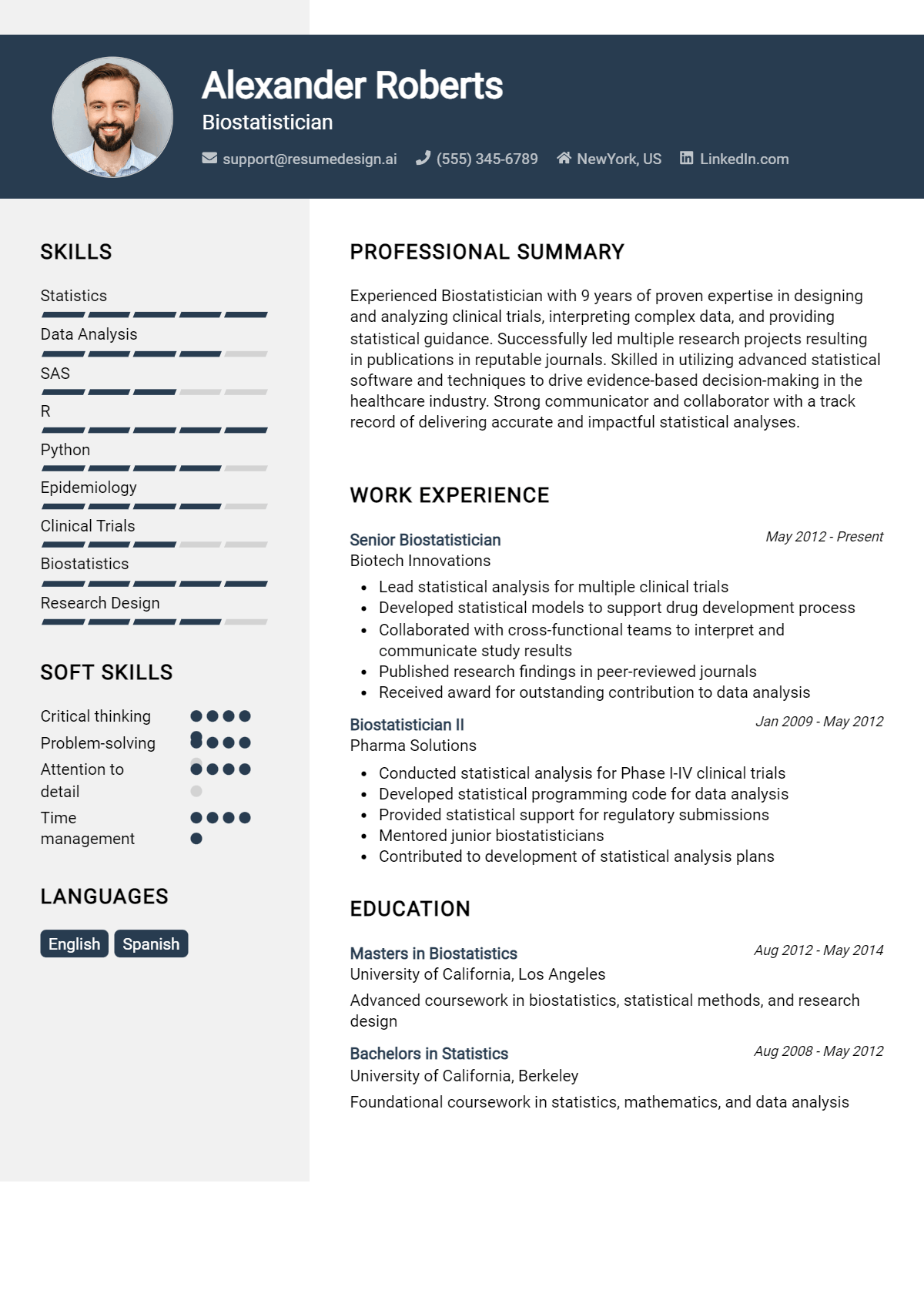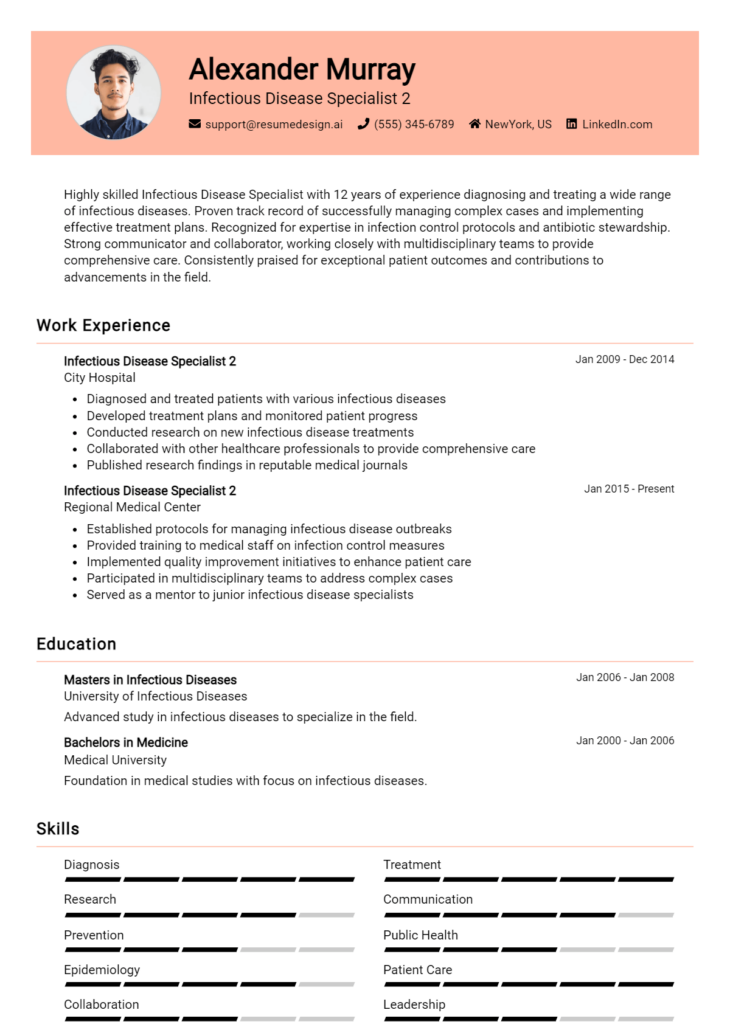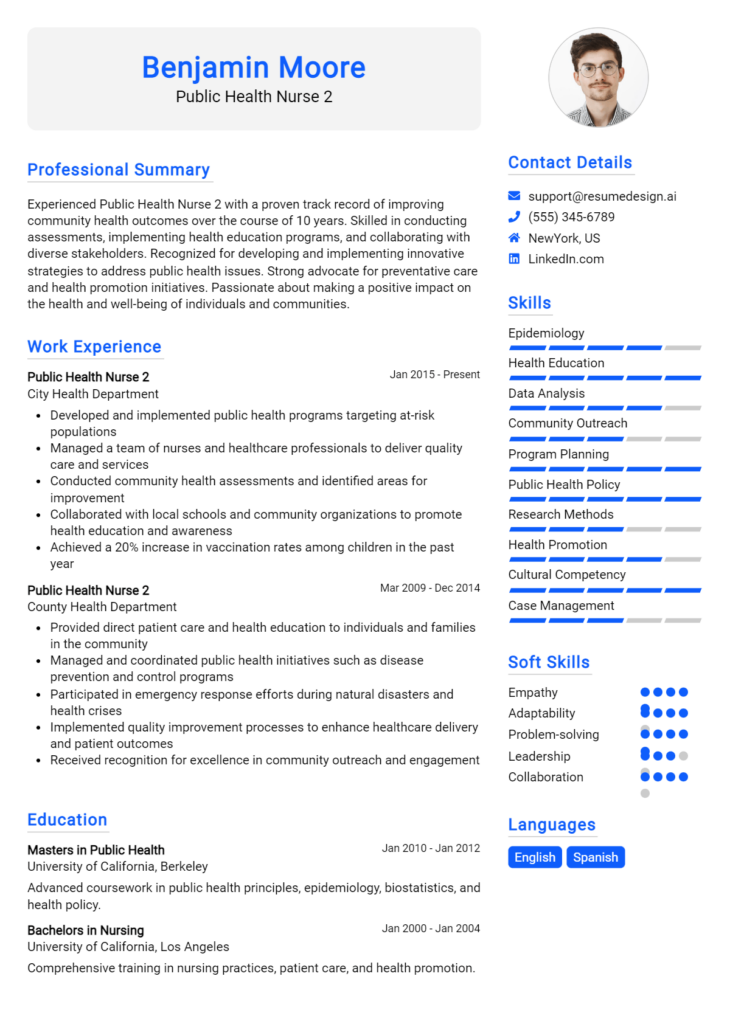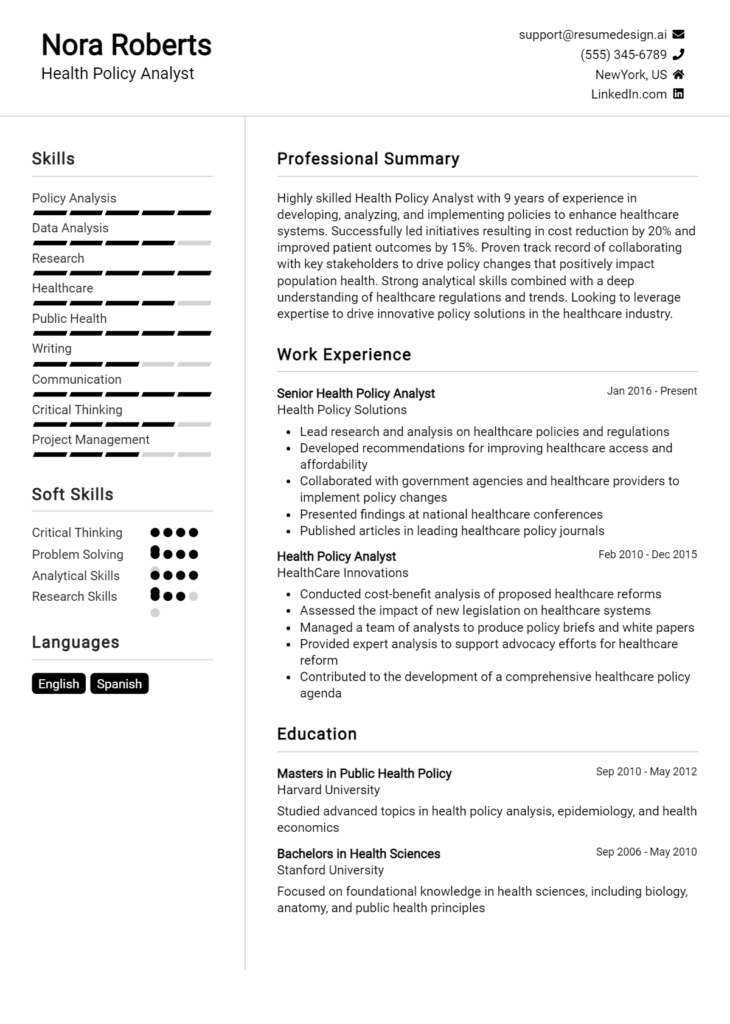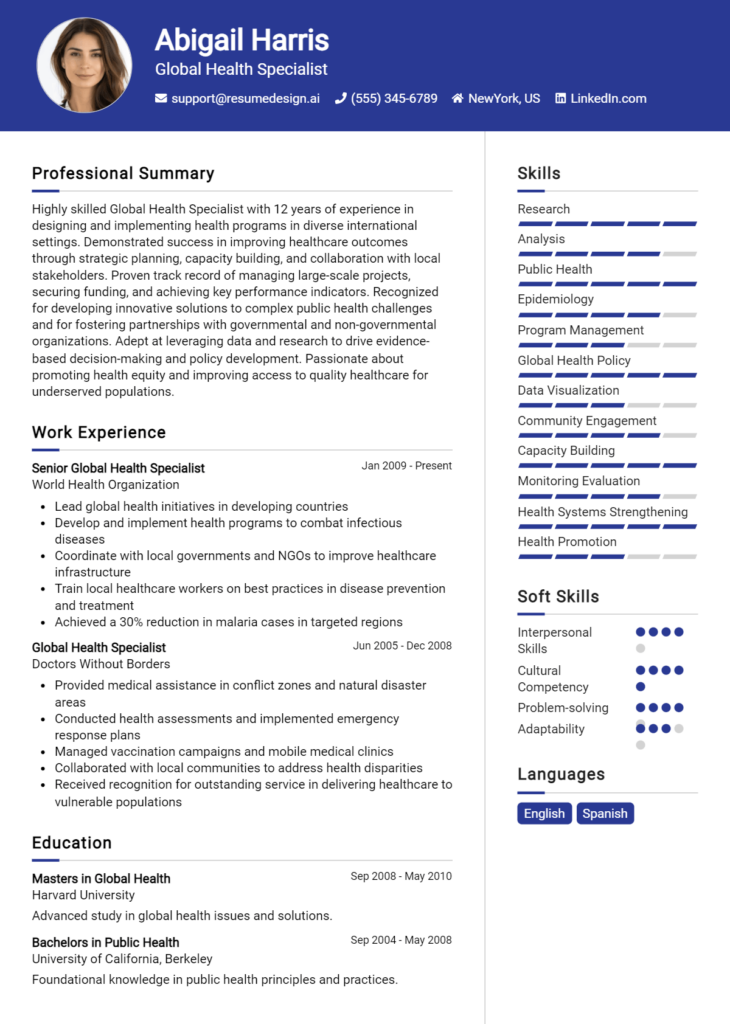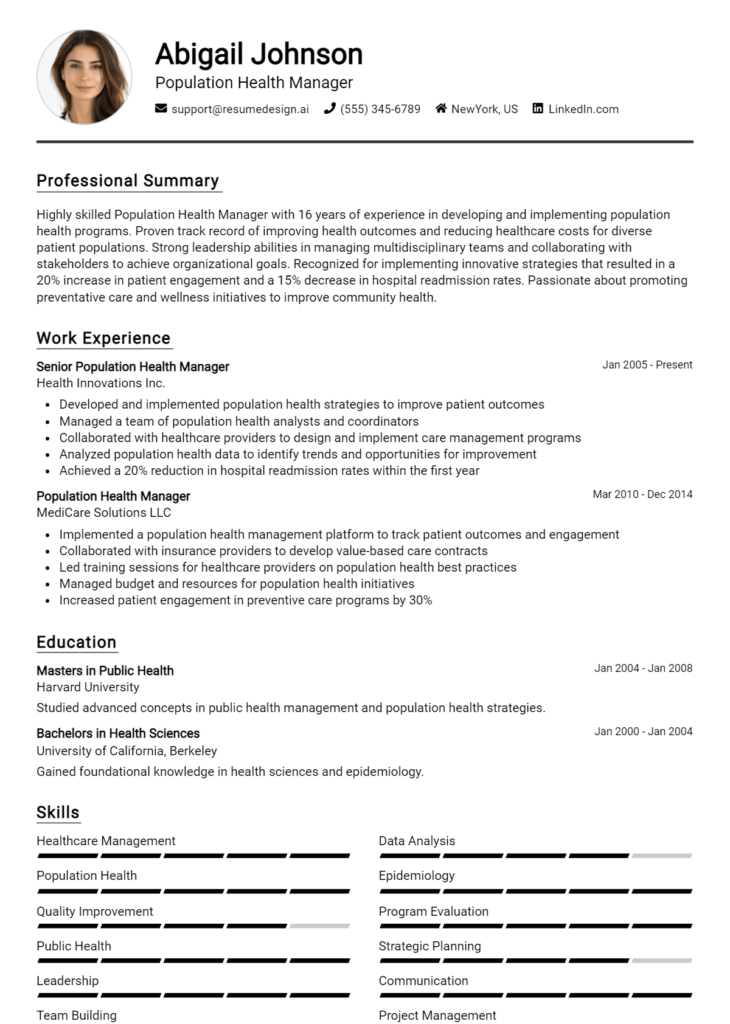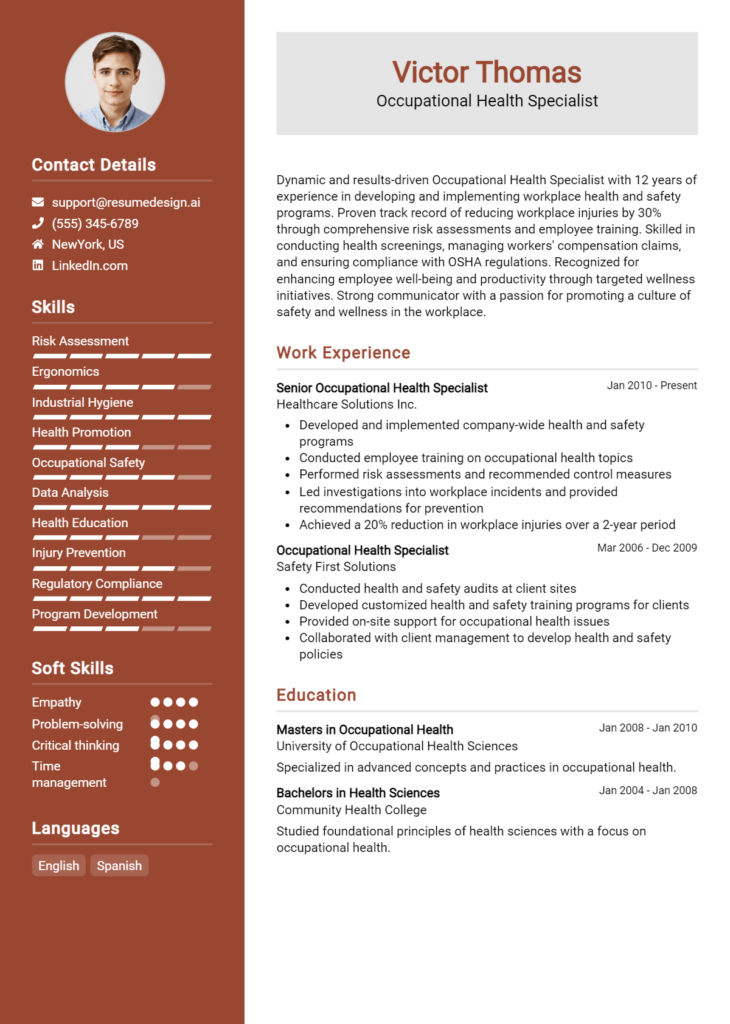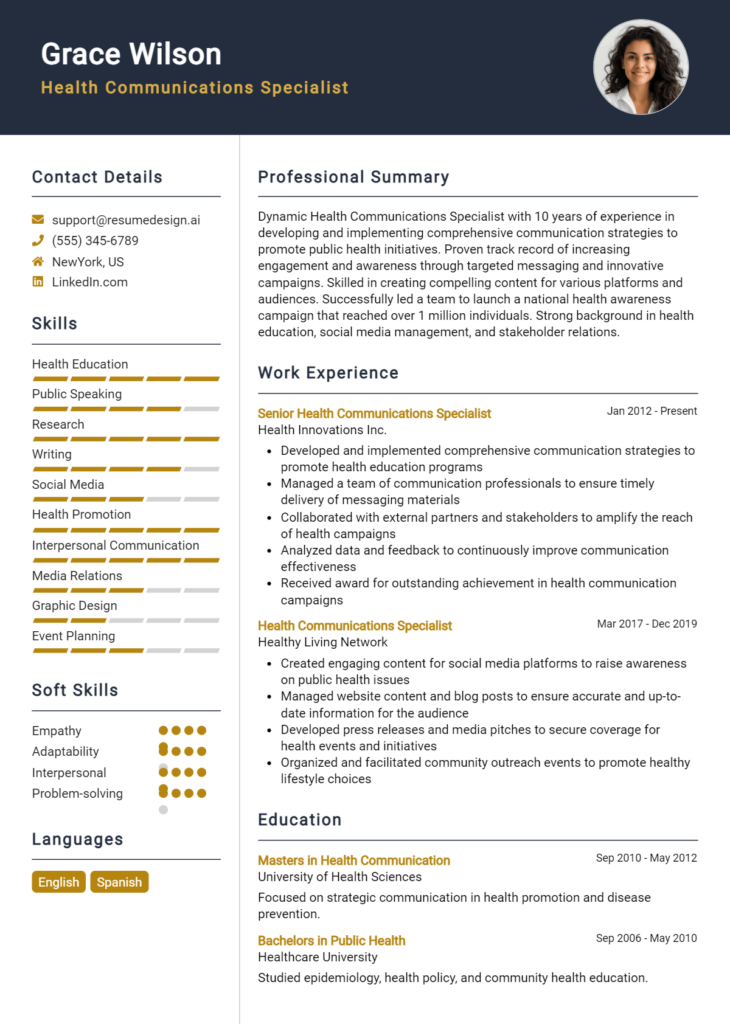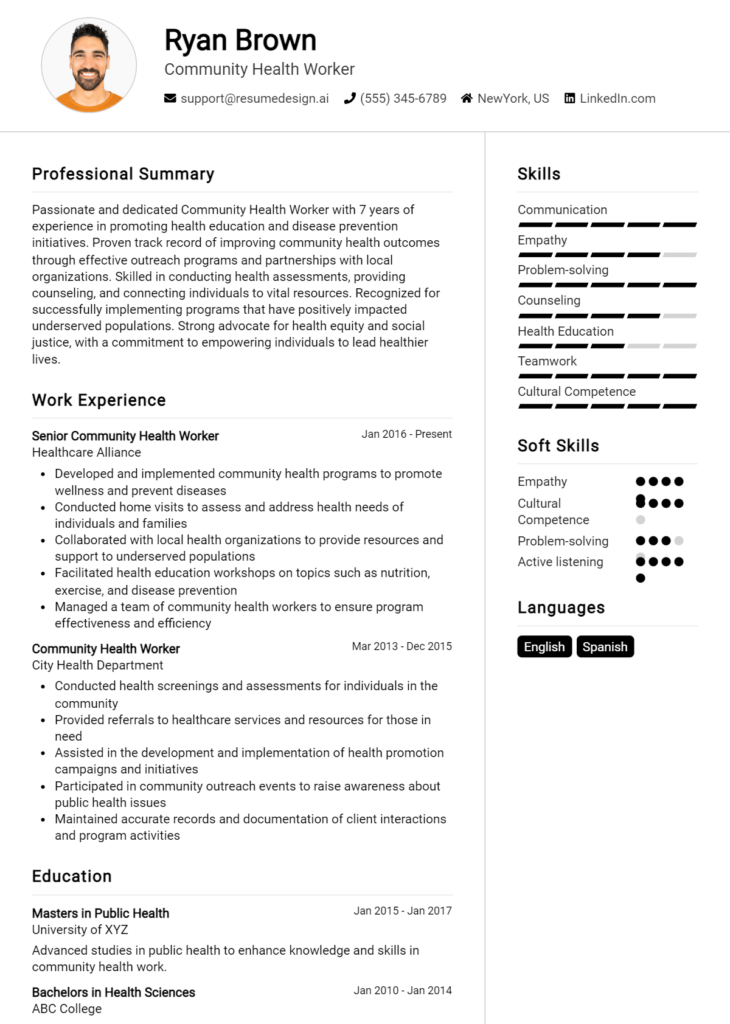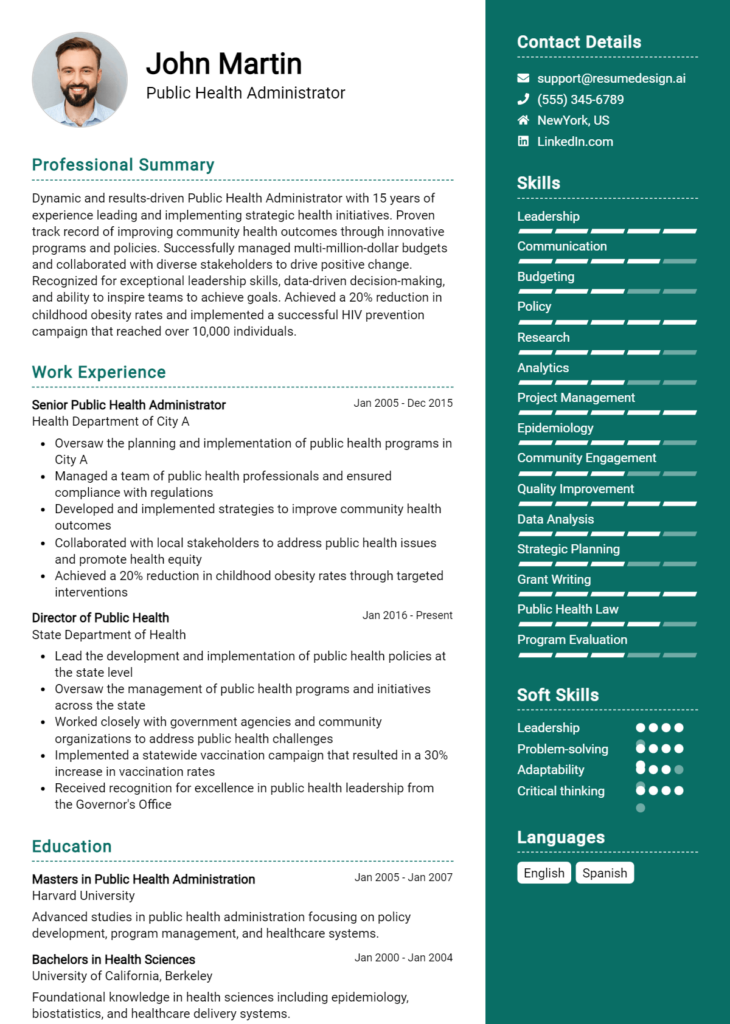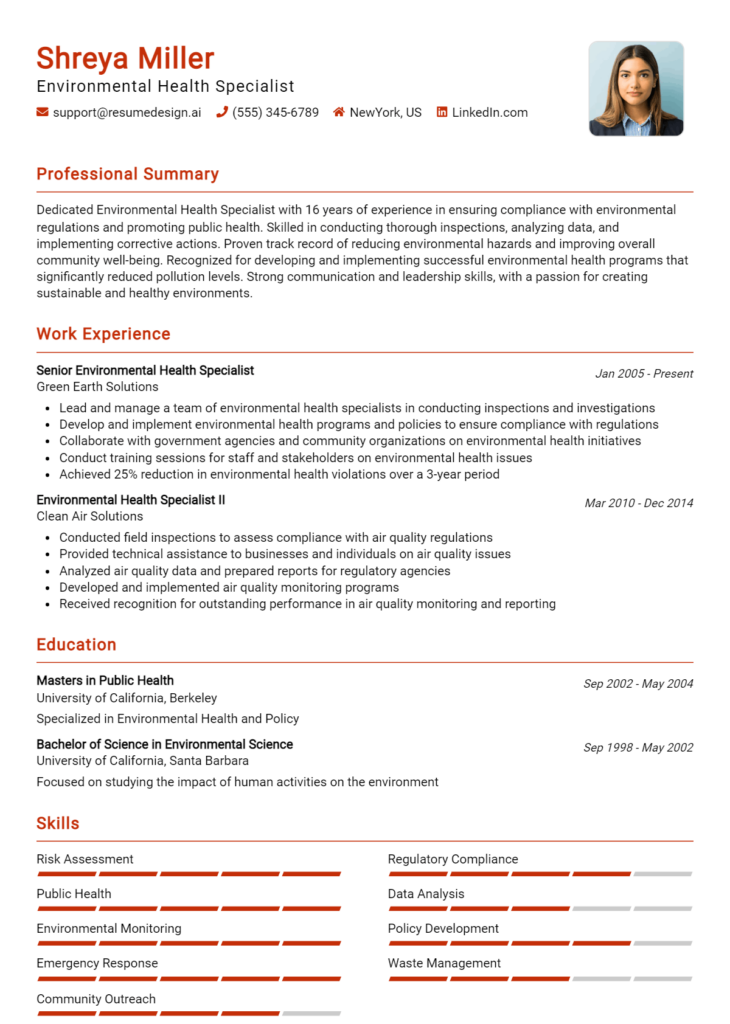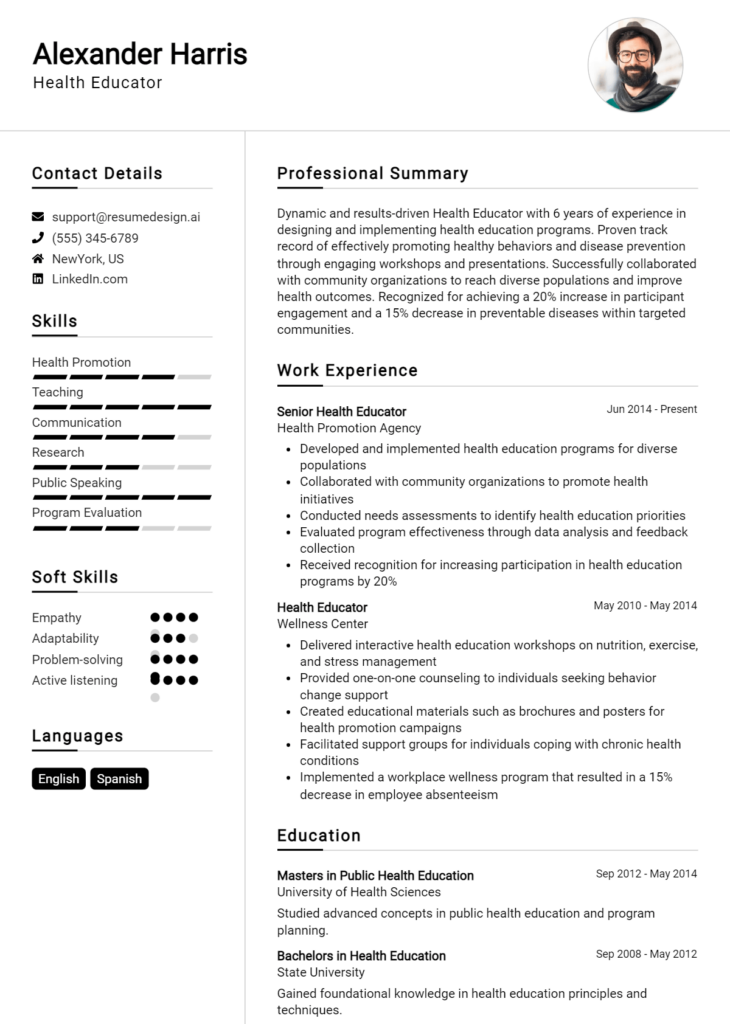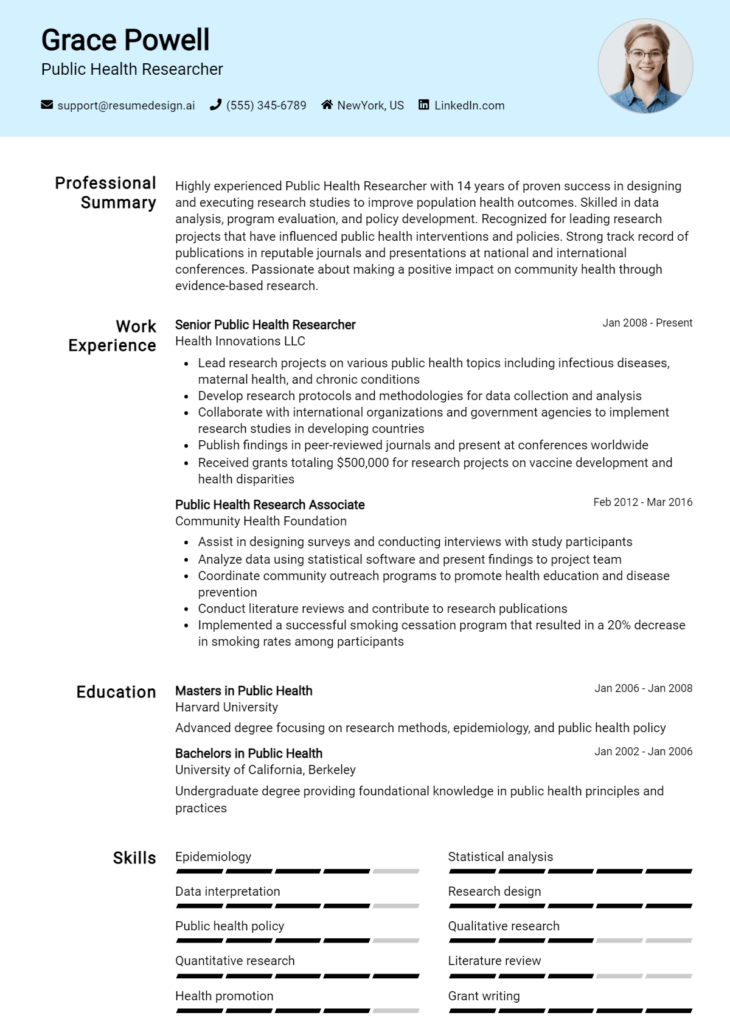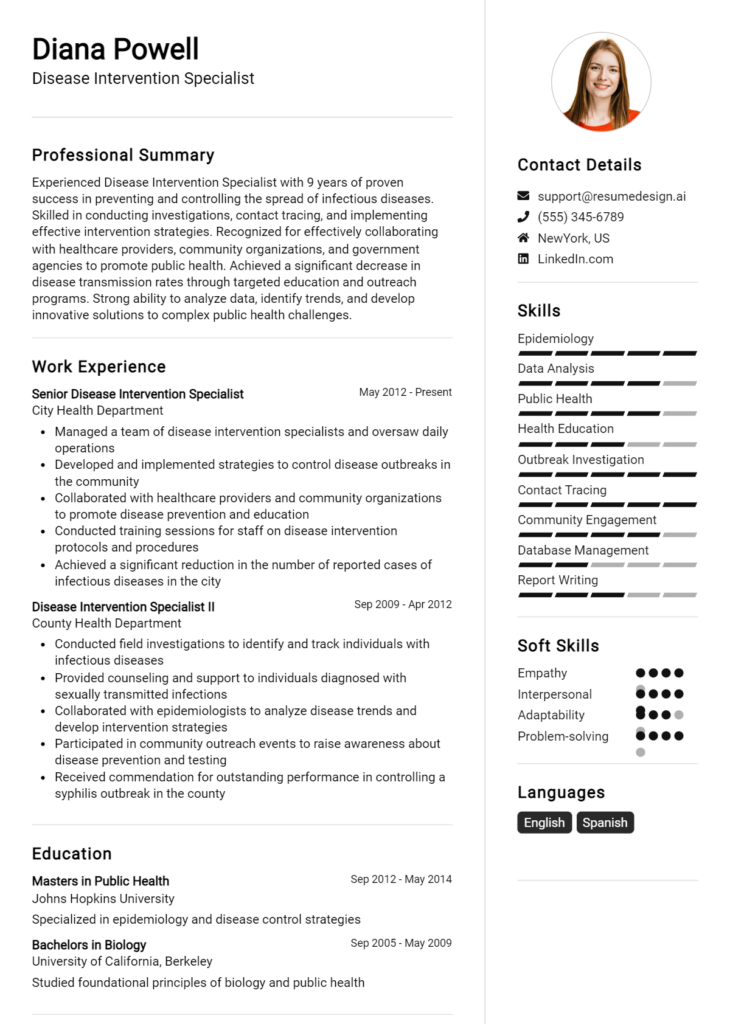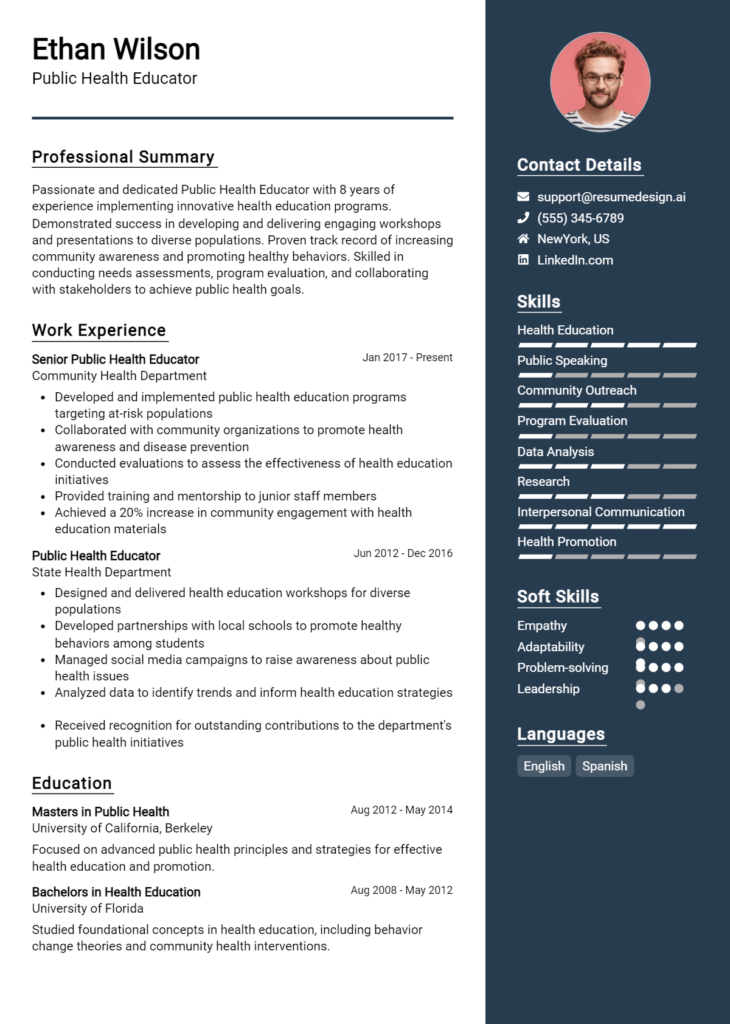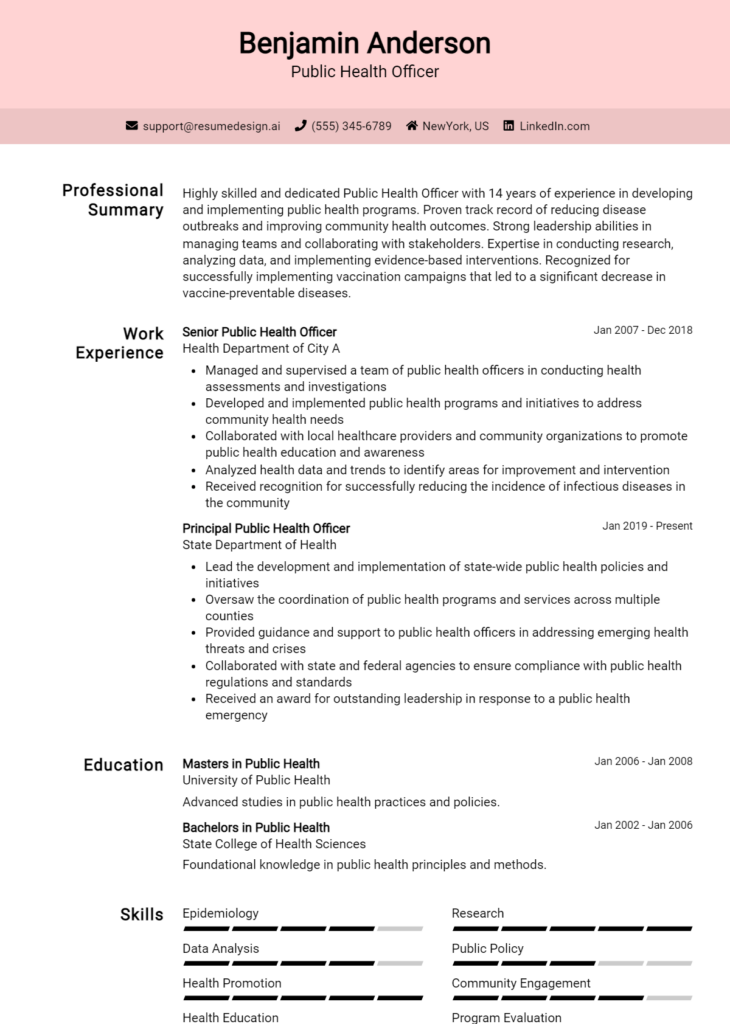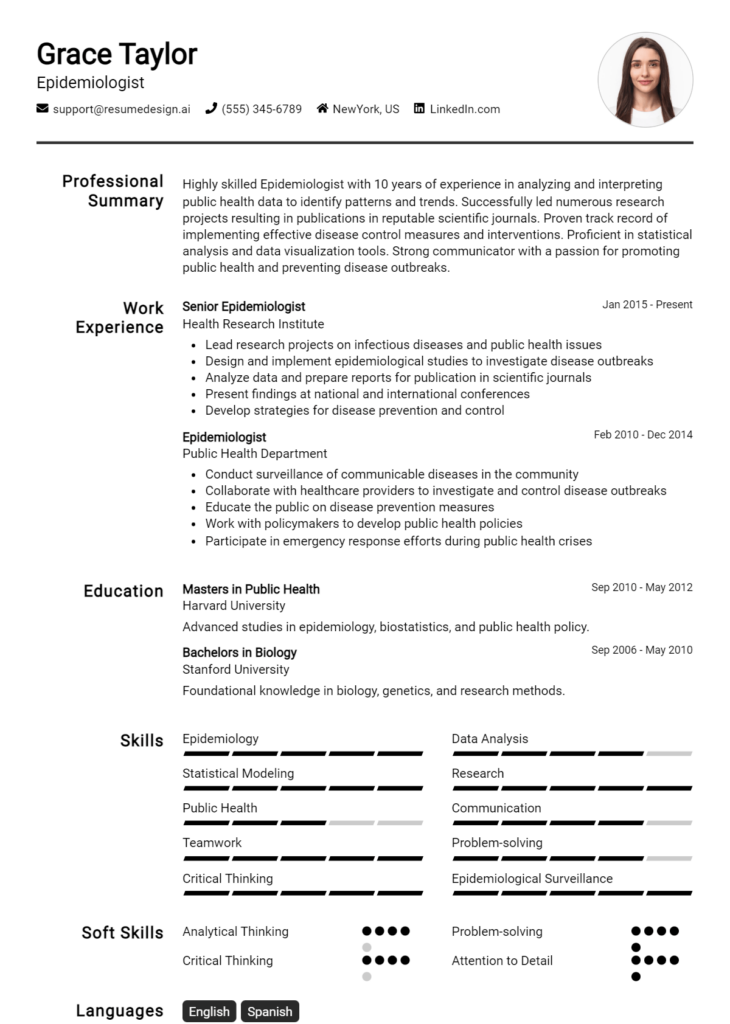Biostatistician Core Responsibilities
A Biostatistician plays a crucial role in analyzing and interpreting complex data, bridging the gap between clinical research, public health, and regulatory affairs. Key responsibilities include designing studies, performing statistical analyses, and collaborating with interdisciplinary teams to ensure data integrity and accuracy. Essential skills encompass technical proficiency in statistical software, operational efficiency, and strong problem-solving abilities. These competencies are vital for contributing to the organization's objectives, and a well-structured resume can effectively highlight these qualifications to potential employers.
Common Responsibilities Listed on Biostatistician Resume
- Designing and implementing statistical models for clinical trials.
- Analyzing large datasets using statistical software (e.g., SAS, R).
- Collaborating with researchers to formulate study protocols.
- Interpreting data results and presenting findings to stakeholders.
- Ensuring compliance with regulatory standards in data collection.
- Conducting power analyses and sample size calculations.
- Providing statistical consultation to cross-functional teams.
- Developing and maintaining databases for data management.
- Creating detailed reports and documentation of statistical methods.
- Participating in peer review processes and manuscript preparation.
- Staying current with advancements in biostatistics and related fields.
High-Level Resume Tips for Biostatistician Professionals
In the competitive field of biostatistics, a well-crafted resume is not just a document; it’s your first opportunity to make a lasting impression on potential employers. As a Biostatistician, you possess a unique blend of statistical expertise and life sciences knowledge, and your resume should reflect both your technical skills and your professional achievements. It serves as a showcase of your qualifications, helping you stand out in a pool of candidates. This guide will provide practical and actionable resume tips tailored specifically for Biostatistician professionals, ensuring that your application effectively communicates your capabilities and value to prospective employers.
Top Resume Tips for Biostatistician Professionals
- Tailor your resume to the specific job description by incorporating relevant keywords and phrases.
- Highlight your educational background, emphasizing degrees in biostatistics, statistics, or related fields.
- Showcase relevant experience, including internships, research projects, and positions that demonstrate your analytical skills.
- Quantify your achievements by providing specific metrics, such as improvements in data analysis efficiency or contributions to successful clinical trials.
- Emphasize your proficiency with statistical software (e.g., R, SAS, SPSS) and programming languages (e.g., Python, SQL).
- Include any relevant certifications or training, such as certifications from the American Statistical Association or other professional organizations.
- Demonstrate your ability to communicate complex statistical concepts clearly, highlighting any experience in presenting findings to non-technical audiences.
- Incorporate soft skills that are essential for collaboration, problem-solving, and critical thinking.
- Keep your resume concise and well-organized, ideally limited to one or two pages.
- Proofread for errors and ensure formatting is consistent, as attention to detail is crucial in this field.
By implementing these tailored tips, you can significantly enhance your chances of landing a job in the biostatistics field. A well-structured and focused resume will not only highlight your qualifications but also convey your professionalism and commitment to excellence, making you a strong candidate in the eyes of potential employers.
Why Resume Headlines & Titles are Important for Biostatistician
In the competitive field of biostatistics, a well-crafted resume headline or title holds significant importance. It serves as the first impression a hiring manager will have of a candidate, acting as a concise summary of their key qualifications and expertise. A strong headline can instantly capture attention and communicate a candidate's suitability for the role, setting them apart from the competition. By being concise and directly relevant to the job being applied for, a headline can effectively convey the candidate's unique value proposition, making it a critical element of their resume.
Best Practices for Crafting Resume Headlines for Biostatistician
- Keep it concise: Aim for a headline that is no longer than 10-12 words.
- Be role-specific: Tailor the headline to reflect the specific biostatistics position you are applying for.
- Highlight key skills: Incorporate essential skills or areas of expertise relevant to biostatistics.
- Use industry terminology: Utilize terms that resonate with hiring managers in the biostatistics field.
- Showcase achievements: If possible, include notable accomplishments to enhance credibility.
- Avoid jargon: Ensure that the language used is clear and accessible, steering clear of overly technical terms.
- Focus on impact: Communicate how your skills and experience can benefit the employer.
- Stay professional: Maintain a formal tone that reflects the seriousness of the role.
Example Resume Headlines for Biostatistician
Strong Resume Headlines
Experienced Biostatistician Specializing in Clinical Trials and Data Analysis
Results-Driven Biostatistician with 5+ Years in Pharmaceutical Research
Biostatistician with Proven Expertise in Statistical Modeling and Epidemiology
Detail-Oriented Biostatistician Skilled in R and SAS Programming
Weak Resume Headlines
Biostatistician Looking for Job
Statistics Expert
Professional with Experience
The strong resume headlines are effective because they are specific, relevant, and highlight key skills or achievements that resonate with the needs of hiring managers in the biostatistics field. They convey confidence and demonstrate a clear understanding of the role. In contrast, the weak headlines fail to impress due to their vagueness and lack of detail; they do not provide any insight into the candidate's qualifications or the value they could bring to the organization, which can lead to a missed opportunity in a competitive job market.
Writing an Exceptional Biostatistician Resume Summary
A well-crafted resume summary is crucial for a Biostatistician, as it serves as the first impression a hiring manager will have of a candidate's qualifications. In a competitive job market, a strong summary can quickly capture attention by effectively highlighting key skills, relevant experience, and notable accomplishments that align with the job role. It should be concise and impactful, providing a snapshot of the candidate's value while being tailored specifically to the position they are applying for. This tailored approach not only showcases the candidate's expertise but also demonstrates their understanding of the job requirements, making them a more attractive prospect to potential employers.
Best Practices for Writing a Biostatistician Resume Summary
- Quantify Achievements: Use specific numbers and statistics to demonstrate your impact in previous roles.
- Focus on Key Skills: Highlight skills that are directly relevant to the biostatistics field, such as statistical analysis, data interpretation, and software proficiency.
- Tailor for the Job Description: Customize your summary to reflect the required skills and experiences outlined in the job listing.
- Use Action Words: Start sentences with powerful action verbs to convey a sense of initiative and results-oriented behavior.
- Keep It Concise: Aim for 2-4 sentences that pack a punch; avoid unnecessary jargon or fluff.
- Showcase Relevant Experience: Briefly mention your years of experience and areas of expertise in biostatistics or related fields.
- Highlight Problem-Solving Abilities: Emphasize your capacity to address challenges and contribute to successful outcomes.
Example Biostatistician Resume Summaries
Strong Resume Summaries
Results-driven biostatistician with over 5 years of experience in clinical trial analysis, skilled in utilizing SAS and R to interpret complex datasets, leading to a 30% increase in data accuracy for major pharmaceutical studies.
Detail-oriented biostatistician with expertise in epidemiological research, successfully designed and executed statistical models that reduced patient recruitment time by 25% across multiple clinical trials.
Dynamic biostatistician with a Ph.D. in Biostatistics, specializing in predictive modeling and machine learning applications, contributing to the development of innovative solutions that improved patient outcomes by 15% in longitudinal studies.
Weak Resume Summaries
Experienced biostatistician looking for a new opportunity in a challenging environment. I have worked on various projects in the past.
Biostatistician with some experience in data analysis and research. I am a team player and can adapt to different roles.
The examples of strong resume summaries are considered effective because they provide specific achievements, quantify results, and clearly align with the skills needed for a biostatistician role. They showcase the candidate's unique contributions and experiences, making them stand out to hiring managers. In contrast, the weak summaries lack detail and fail to convey measurable outcomes or relevant expertise, making them less compelling and memorable.
Work Experience Section for Biostatistician Resume
The work experience section of a Biostatistician resume is a critical component that serves to highlight a candidate's technical skills, leadership capabilities, and the ability to produce high-quality products. This section not only outlines the applicant's previous roles but also illustrates how their contributions have advanced organizational goals and improved research outcomes. By quantifying achievements and aligning past experiences with industry standards, candidates can effectively demonstrate their value to potential employers and set themselves apart in a competitive job market.
Best Practices for Biostatistician Work Experience
- Use specific metrics to quantify achievements, such as percentage improvements or successful project completions.
- Highlight technical skills relevant to biostatistics, such as proficiency in statistical software (e.g., SAS, R, or Python).
- Showcase experience in team management, emphasizing collaborative projects and leadership roles.
- Detail your role in significant research projects, including your contributions to study design and data analysis.
- Align your experiences with industry standards and expectations, demonstrating knowledge of regulatory guidelines.
- Include examples of effective communication with cross-functional teams, underscoring your ability to present complex data clearly.
- Emphasize continuous learning and adaptation to new statistical methods or technologies.
- Tailor your experience to match the job description, using keywords that resonate with the specific role.
Example Work Experiences for Biostatistician
Strong Experiences
- Led a team of biostatisticians in a multi-center clinical trial, resulting in a 30% reduction in analysis time while maintaining accuracy, which contributed to timely regulatory submissions.
- Developed and implemented a new statistical model that improved prediction accuracy of patient outcomes by 25%, enhancing the overall quality of the research findings.
- Collaborated with cross-functional teams to design a pivotal study, successfully navigating regulatory requirements and achieving a 95% compliance rate during inspections.
- Authored and co-authored five peer-reviewed publications, with a focus on innovative statistical methodologies, significantly raising the profile of the research team within the industry.
Weak Experiences
- Worked on various projects related to data analysis without specifying the impact or outcomes of the work.
- Assisted in the statistical analysis of clinical trials, but did not mention specific methodologies or results achieved.
- Participated in team meetings and discussions but did not highlight any leadership roles or contributions to project success.
- Used statistical software for data entry and reporting, without detailing the complexity or significance of the data handled.
The examples presented are considered strong because they provide clear, quantifiable outcomes and detail the candidate's technical leadership and collaborative efforts within their roles. They demonstrate not only what the candidate did but also the positive impact of their contributions on research and project success. In contrast, the weak experiences lack specificity and measurable results, making it difficult for potential employers to gauge the candidate's true capabilities and contributions in the field of biostatistics.
Education and Certifications Section for Biostatistician Resume
The education and certifications section of a Biostatistician resume is crucial as it showcases the candidate's academic qualifications and their commitment to ongoing professional development. This section highlights the importance of a solid educational foundation in statistics, mathematics, and biology, which are essential for effective data analysis in the biostatistics field. Additionally, industry-relevant certifications and specialized training demonstrate a candidate's capability to apply their knowledge in real-world scenarios, enhancing their credibility and alignment with the job role. Providing relevant coursework and certifications can significantly bolster a candidate's appeal to potential employers, illustrating their preparedness for the challenges of the position.
Best Practices for Biostatistician Education and Certifications
- Include only relevant academic degrees, such as a Master's or Ph.D. in Biostatistics, Statistics, or related fields.
- List certifications that are recognized in the industry, such as the Certified Biostatistician (CBS) or SAS Certified Statistical Business Analyst.
- Highlight specialized training or coursework in areas like epidemiology, clinical trials, or statistical programming.
- Be specific about the level of education completed, including dates of attendance and graduation.
- Use bullet points to make the information easy to read and scan quickly.
- Include honors or distinctions received during your studies, such as cum laude or scholarships.
- Continuously update this section to reflect any new certifications or relevant courses taken.
- Consider adding a brief summary of key projects or research work completed during your education that relates to biostatistics.
Example Education and Certifications for Biostatistician
Strong Examples
- M.S. in Biostatistics, University of California, Berkeley, 2020
- Ph.D. in Statistics, Harvard University, 2023
- Certified Biostatistician (CBS), American Statistical Association, 2021
- Relevant Coursework: Advanced Statistical Methods, Epidemiology, Clinical Trials Design
Weak Examples
- B.A. in History, University of Michigan, 2015
- Certification in Microsoft Excel (2019)
- Online Course in Basic Statistics (2020)
- High School Diploma, Springfield High School, 2013
The examples provided illustrate a clear distinction between strong and weak qualifications. Strong examples are relevant and directly applicable to the biostatistics field, showcasing advanced degrees and recognized certifications that align with industry standards. In contrast, weak examples reflect outdated or irrelevant educational backgrounds and certifications that do not contribute to the candidate's ability to perform in a biostatistician role, thereby diminishing their appeal to potential employers.
Top Skills & Keywords for Biostatistician Resume
In the competitive field of biostatistics, a well-crafted resume is essential for standing out among potential employers. Highlighting both hard and soft skills is crucial, as they demonstrate not only your technical expertise but also your ability to communicate and collaborate effectively within multidisciplinary teams. A biostatistician's role often involves complex data analysis and interpretation, where precision and analytical thinking are paramount. Additionally, soft skills such as problem-solving and effective communication can significantly impact project outcomes and enhance teamwork. Therefore, when crafting your resume, it’s important to showcase a balanced mix of these skills to reflect your qualifications and readiness for the role.
Top Hard & Soft Skills for Biostatistician
Soft Skills
- Analytical Thinking
- Problem Solving
- Attention to Detail
- Communication Skills
- Team Collaboration
- Time Management
- Adaptability
- Critical Thinking
- Interpersonal Skills
- Creativity
Hard Skills
- Statistical Analysis Software (e.g., R, SAS, SPSS)
- Data Management and Manipulation
- Experimental Design
- Epidemiological Methods
- Programming Languages (e.g., Python, SQL)
- Data Visualization Techniques
- Bioinformatics
- Machine Learning
- Clinical Trials Knowledge
- Research Methodology
For more information on skills and work experience, consider exploring additional resources that can help you refine your resume and enhance your job application process.
Stand Out with a Winning Biostatistician Cover Letter
Dear [Hiring Manager's Name],
I am excited to apply for the Biostatistician position at [Company Name], as advertised on [where you found the job posting]. With a Master's degree in Biostatistics and over [X years] of experience in statistical analysis within the healthcare sector, I am confident in my ability to contribute effectively to your team. My background in analyzing clinical trial data and my strong proficiency in statistical software such as R, SAS, and Python equip me with the skills necessary to tackle the complex challenges faced by your organization.
In my previous role at [Previous Company Name], I successfully led a project that investigated the efficacy of a new medication, where I designed the statistical analysis plan, executed data collection, and performed comprehensive statistical analyses. My efforts contributed to the successful submission of findings to regulatory bodies, resulting in a [percentage]% increase in project approval rates. I am passionate about translating data into actionable insights, and I thrive in collaborative environments where I can work closely with researchers and clinicians to refine methodologies and ensure that our analyses meet the highest standards of rigor.
I am particularly drawn to the innovative work being done at [Company Name], especially in the realm of [specific area of interest related to the company]. I am eager to bring my expertise in biostatistics and my commitment to advancing public health through data-driven decision-making to your team. I believe my analytical skills, combined with my attention to detail and strong communication abilities, will enable me to make significant contributions to your ongoing projects.
Thank you for considering my application. I look forward to the opportunity to discuss how my background and skills align with the goals of [Company Name]. I am excited about the possibility of contributing to your team and am available for an interview at your earliest convenience.
Sincerely,
[Your Name]
[Your LinkedIn Profile or Other Contact Information]
Common Mistakes to Avoid in a Biostatistician Resume
When crafting a resume for a biostatistician position, it's essential to highlight your analytical skills, relevant experience, and technical expertise. However, many candidates make common mistakes that can detract from their qualifications. Avoiding these pitfalls will help ensure your resume stands out in a competitive job market. Here are some common mistakes to steer clear of:
Lack of Specificity: Failing to provide specific examples of your work can make your resume vague. Include clear metrics and outcomes to showcase your contributions effectively.
Ignoring Keywords: Many employers use Applicant Tracking Systems (ATS) to filter resumes. If you don't incorporate relevant keywords from the job description, your resume may not make it through the initial screening.
Overloading with Technical Jargon: While technical skills are important, using too much jargon can alienate recruiters who may not have a statistical background. Aim for a balance that demonstrates your expertise without overwhelming the reader.
Neglecting Soft Skills: Biostatisticians often work in collaborative environments. Failing to mention soft skills like teamwork and communication can give the impression that you lack the interpersonal skills needed for the role.
Poor Formatting: A cluttered or overly complicated resume format can make it difficult for hiring managers to find key information. Use clear headings and bullet points for easy readability.
Including Irrelevant Experience: Focus on highlighting experiences that are pertinent to the biostatistics field. Including unrelated job experiences can dilute the impact of your resume.
Skipping Education and Certifications: Biostatistics requires a strong educational background. Omitting relevant degrees or certifications can lead to missed opportunities, so ensure these are clearly presented.
Not Tailoring for Each Application: Sending the same resume for different positions can be detrimental. Tailoring your resume to match each job description demonstrates your genuine interest and alignment with the specific role.
Conclusion
As a Biostatistician, your role is pivotal in analyzing data to drive healthcare decisions and research outcomes. Throughout this article, we've explored the essential skills and qualifications needed to thrive in this field, such as proficiency in statistical software, a deep understanding of biostatistics principles, and the ability to communicate findings effectively.
It's crucial to present these skills compellingly in your resume to stand out in a competitive job market. A well-crafted resume can highlight your technical expertise, project experience, and ability to collaborate with interdisciplinary teams.
Now is the perfect time to review your Biostatistician resume and ensure it accurately reflects your qualifications and achievements. To assist you in this process, take advantage of various resources available online. You can explore resume templates, utilize the resume builder, review resume examples, and create an impactful cover letter with the help of cover letter templates.
Enhance your job application materials today and take the next step in your Biostatistics career!

